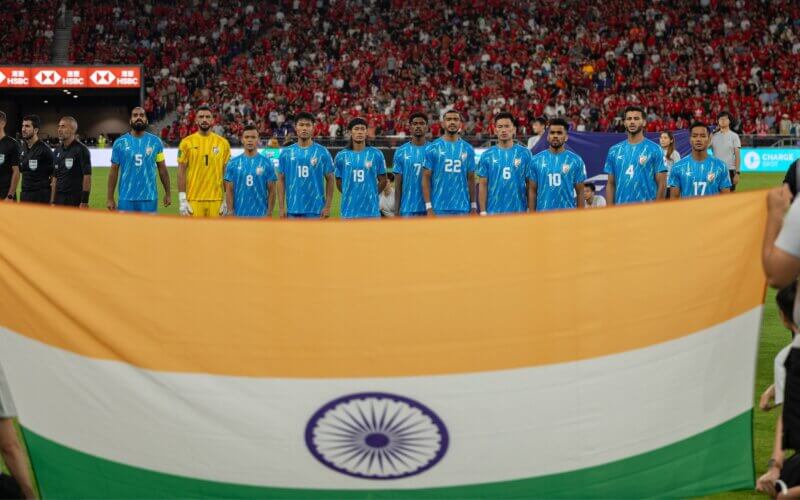
There’s something deeply unsettling about a nation of 1.4 billion not finding a single bidder for its premier football league. It’s not just a commercial failure …it’s a reality check. Indian football, once poised to be the next big frontier after cricket, now stares at a future clouded by neglect, inconsistency, and a loss of confidence from both fans and financiers.
Lets try and decode what has gone wrong. The agreement between AIFF and FSDL was set to expire in December, and the Supreme Court has ordered a pause until the AIFF constitution is sorted out. If you are a commercial partner considering a long-term investment in a league franchise, this “waiting in limbo” scenario is a deal-killer. Firms want clarity on rights ownership, regulatory risk, schedule certainty. Without that, few will bid.
Several ISL clubs have suspended salaries or operations because they cannot justify further bleeding in an unknown environment. The revenue from a central broadcasting and sponsorship pool is pretty much cancelled out by the franchise fee that the owners have to pay. This suggests the upside for rights-holders is modest, the burden high – not an attractive proposition. For a commercial partner, delays mean costs without return, making the risk-return calculus unfavourable. In short: the commercial partner sees multiple red flags – legal/regulatory risk, fragile club economics, unclear revenue growth, schedule risk, and so withdraws.
From a sports-business lens, the absence of a bid is a signal that the “where to play / how to win” for the ISL has yet to be convincingly articulated. Commercial partners look for upside – strong growth potential, controllable cost structure, clarity on rights and governance. The ISL model appears to have placed large fixed costs (franchise payments, club participation fees) and significant obligations (production, infrastructure) while the upside remains modest.
Unlike mature leagues (e.g., top-tier football in Europe or cricket’s IPL in India) where broadcasting rights, digital consumption, global brand extensions are meaningful, the ISL is still fighting for that breakthrough. Without strong TV/digital viewership metrics, sponsorship depth, or licensing/matching margins, a bidder sees too much execution risk.
Governance models matter. If clubs don’t have meaningful skin in the game, if the rights model lacks clarity, the commercial partner cannot be confident of future growth. When clubs suspend salaries, match officials complain, operations come to a stand-still – the brand and credibility suffer. A commercial partner invests not just in rights, but in perception and momentum. That is compromised.
Cricket’s dominance isn’t just about heritage; it’s about consistent storytelling and smart economics. The IPL created a repeatable, predictable product where broadcasters could calculate ROI, brands could embed themselves in narratives, and fans could identify with their franchises. Women’s cricket has smartly followed that playbook combining emotion, empowerment, and performance to offer a cause that resonates.
The immediate fallout is harsh: with no broadcast or commercial partner, Indian football risks losing financial oxygen. Development programs, league operations, and national team support are all at risk. Without consistent media exposure, even die-hard fans drift away. For players and clubs, that means dwindling sponsorships, late payments, and uncertain careers.
In the long run, this episode could mark either the beginning of a slow death or a moment of rebirth. If the AIFF continues down the same path of relying on top-down structures and inflated valuations, football will remain a fringe pursuit. But if it reimagines its model from the ground up, this setback could become a turning point.
What could some innovation look like? Instead of going national, stay regional. Give fans a financial and emotional stake in their local clubs. Community-based shareholding models, already proven in European football, could be piloted in India’s footballing states. When fans invest even symbolically, loyalty becomes commerce. A clear promotion-relegation system will lend credibility and sporting integrity, attracting investors who crave structure over spectacle; combine this with a unified league structure. Football’s strength lies in regional emotion. Local-language commentary, fan documentaries, influencer-led content, and city-based storytelling can make clubs cultural icons, not just teams.
Let’s be clear – Indian football doesn’t need a saviour, it needs a system. This crisis should push the sport to adopt innovation, transparency, and humility. Cricket’s success is not a coincidence; it’s the product of vision and relentless execution. Football, too, can get there but only if it stops mimicking and starts building.
Also Read: Indian football stares into the abyss, undermining FSDL has hit hard
Follow Revsportz for latest sports news



